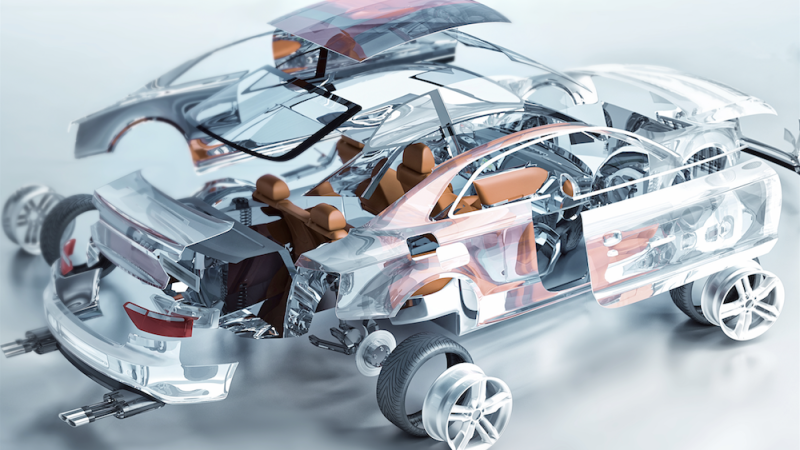Discover the Benefits of Video Borescopes for Inspection and Maintenance

Unveiling the World of Video Borescopes
The Technology Behind the Lens: How Borescopes Work
Video borescopes are sophisticated tools that enable inspection of hard-to-reach areas, providing a clear view through an otherwise obstructed path. At its core, a borescope is essentially a combination of an optical device and a camera, allowing users to conduct inspections with unparalleled convenience. The technology operates on a simple yet effective principle: light reflection. The device typically consists of a flexible or rigid tube housing a camera at the end, along with an illumination system that allows for high-quality imaging.
When inserted into a confined space, such as an engine casing or a wall cavity, the borescope’s camera captures real-time video or images, which are then transmitted to a display screen. This capability is fortified by advancements in digital imaging technology, which allows for high-definition video quality. Modern borescopes may also come equipped with features like adjustable lighting, zoom functions, and the ability to capture still images and video recordings for later analysis. Furthermore, many devices now feature enhanced connectivity options, allowing them to transmit data wirelessly to computers, tablets, or smartphones, making it easier to share findings and collaborate on inspections.
Exploring Different Types of Video Borescopes
Video borescopes come in various forms, tailored to different applications and industries. The two primary categories are flexible and rigid borescopes. Flexible borescopes are designed for navigating through complex paths and curves, making them ideal for automotive inspections, HVAC systems, and plumbing diagnostics. Their flexibility allows the operator to maneuver through tight spots, capturing footage at multiple angles which would otherwise be inaccessible.
Rigid borescopes, on the other hand, are typically used in applications where the inspection pathway is more direct and less convoluted. These devices are beneficial in environments such as aviation or heavy machinery, where precision is critical, and the ability to hold the device steady is essential for achieving high-quality images. Innovations have led to the development of various lengths of borescopes, ranging from short models suitable for small spaces to extensive models that can reach deeper into machinery and structures. Moreover, specialized borescopes for medical purposes exist, offering high-resolution imaging necessary for endoscopic procedures.
Key Features to Look For: What Makes a Borescope Stand Out?
When selecting a video borescope, it’s essential to consider several key features that can influence the quality and effectiveness of inspections. The first is the camera resolution; a higher pixel count will result in clearer, more detailed images, which is crucial for identifying issues accurately. HD and even 4K resolution options are becoming more available, providing exceptional clarity.
Lighting is another critical feature, as environments can often be poorly lit. Adjustable LED lighting that can be turned up or down or positioned at various angles enhances visibility and reduces shadows on the inspection surface. Additionally, the flexibility of the probe and its diameter must be considered, as these factors determine how easily it can access tight spaces.
Lastly, features like video recording capabilities, viewing angles, and real-time data analysis tools can significantly streamline the inspection process. User-friendly interfaces and robust software that allow for easy navigation and data management will contribute to an efficient workflow, making these tools even more valuable for professionals across different sectors.
The Advantages of Video Borescopes in Various Industries
From Aviation to Plumbing: Diverse Applications of Borescopes
The versatility of video borescopes positions them as essential tools across numerous industries. In aviation, these devices are indispensable for conducting thorough maintenance inspections on aircraft engines, fuel systems, and critical components. The high-definition imaging capabilities allow engineers to detect potential issues such as corrosion or misalignment that might compromise safety and performance.
In the plumbing industry, borescopes are used to inspect pipelines and drains. They allow professionals to identify blockages, leaks, and structural damage without the need for invasive exploratory work. This capability not only saves time and money but also minimizes disruption to both properties and infrastructures.
Other industries leveraging borescopes include manufacturing, where they are used for quality control and machinery maintenance, and construction, for ensuring compliance with building codes. Even in fields like geology, borescopes can facilitate inspections of boreholes, providing insight into subsurface conditions crucial for resource extraction and environmental assessments. The adaptability of these tools continues to inspire innovative applications across diverse and complex inspection scenarios.
Maximizing Efficiency: How Borescopes Streamline Inspections
The efficiency of video borescopes can revolutionize the inspection process, saving valuable labor hours and minimizing downtime. By providing immediate video feedback, inspectors can evaluate conditions rapidly, allowing for quicker decision-making. Traditional inspection methods often require significant time and resources, while borescopes streamline this by offering high-resolution video in conjunction with an intuitive interface that is easy to navigate.
Additionally, their ability to record videos and take photographs means that findings can be documented with accuracy and clarity, aligning with compliance and reporting requirements. This record-keeping facilitates better communication among team members and external stakeholders regarding the condition of equipment or infrastructure. As maintenance and inspection protocols grow increasingly stringent, adopting video borescopes represents a proactive approach to ensuring operational integrity and reducing unexpected failures.
Safety First: The Role of Borescopes in Hazardous Environments
When it comes to hazardous environments, the safety benefits of video borescopes are paramount. Inspectors can perform evaluations from a safe distance, removing the need for personnel to enter potentially dangerous areas such as confined spaces, hazardous material sites, or operational machinery. This remote inspection ability significantly reduces risk, ensuring that personnel do not encounter life-threatening scenarios while seeking to identify issues.
Borescopes also assist in complying with safety regulations, as they make it easier to conduct thorough inspections that might otherwise be overlooked due to safety concerns. Moreover, advanced models feature enhanced imaging capabilities that allow for the assessment of structural integrity and identification of environmental hazards without direct observation. The ability to evaluate conditions accurately while preserving workforce safety is a crucial advantage that video borescopes provide across various industries, especially in oil and gas, manufacturing, and construction.
Making the Most of Your Video Borescope: Tips and Tricks
Getting Started: A Beginner’s Guide to Video Borescope Usage
For those new to using video borescopes, getting started may seem daunting; however, a few fundamental tips can help ease the learning curve. First, familiarize yourself with the device’s components and settings. Understanding the function of each button, the camera controls, and the lighting adjustments will increase confidence in operation.
Next, practice using the device in a controlled environment before tackling actual inspection tasks. Experiment with different angles, lighting levels, and probes to get a feel for how the borescope behaves in various conditions. A thorough inspection plan is essential, which should include identifying specific areas of concern and setting clear objectives for the inspection to maximize the efficiency of your assessment.
Lastly, do not overlook the value of online resources and manufacturer tutorials, which can provide helpful insights into effective usage and maintenance practices. Engaging in forums or online communities can also offer tips from seasoned professionals who have navigated similar challenges.
Maintenance Must-Dos: Keeping Your Borescope in Top Shape
Just like any high-precision instrument, regular maintenance is critical to ensure that your video borescope continues to perform optimally. After each use, it’s essential to clean the camera lens to prevent dirt and dust from impacting image quality. Specialized cleaning kits are available and should be utilized to maintain the integrity of the optics.
Additionally, checking the integrity of the cable or tube is vital as potential wear can result in malfunction or damage to the camera. Any visible fraying or kinking should be addressed immediately to prevent further issues. Regular software updates are also essential to ensure that the device operates efficiently and includes the latest features, functionality enhancements, and security fixes.
Lastly, store the video borescope in a protective case when not in use to protect it from environmental factors and accidental damage. By following these maintenance practices, users can extend the lifespan of their equipment and sustain optimal performance levels.
Common Mistakes to Avoid When Using a Borescope
While video borescopes are powerful tools, there are common pitfalls that users should be mindful of to ensure accurate inspections and minimal errors. A frequent mistake involves improper insertion techniques. Users may force the probe into tight spaces without proper care, risking damage to both the device and the inspected area. It’s essential to proceed with caution and apply gentle pressure, allowing the borescope to navigate bends and turns naturally.
Another common error is inadequate lighting setup. Many users underestimate the importance of proper illumination, which can severely impact image quality. Utilizing the borescope’s adjustable lighting features to illuminate the inspection area properly is crucial for capturing clear and detailed footage.
Lastly, neglecting to review collected data can lead to missed insights. Taking the time to analyze recorded videos and images post-inspection allows for deeper insights and more informed maintenance decisions. Avoiding these mistakes will help users maximize the potential of their video borescopes and improve the accuracy and reliability of their inspections.
The Future of Inspection: Innovations in Borescope Technology
Emerging Trends: What’s Next for Video Borescopes?
As technology advances, video borescopes are evolving to include cutting-edge features that enhance their inspection capabilities. Emerging trends point towards more compact and portable designs, allowing professionals to conduct inspections in even tighter spaces without sacrificing image quality. Advances in battery technology are also enabling longer run times, removing the concern of power depletion during critical inspections.
Additionally, there is a growing trend toward integration with augmented reality (AR) technologies. AR applications can overlay real-time computer-generated imagery onto the borescope feed, providing detailed context that aids in identifying issues and planning necessary repairs. This convergence of physical inspection and digital data representation is set to transform how inspections are carried out across various industries.
Integrating AI and Analysis Tools: Enhancing Inspection Capabilities
The integration of artificial intelligence (AI) with video borescope technology is a game-changer in inspection processes. AI algorithms can analyze images and video feeds for identifying defects, wear patterns, or potential hazards with unmatched accuracy. This capability not only increases detection rates but also helps in predictive maintenance, allowing organizations to address issues before they escalate into costly failures.
Incorporating advanced data analysis tools can further enhance the inspection process by organizing and categorizing findings for easier access and reference. This integration allows for seamless reporting and makes it easier to track inspection history over time, supporting long-term asset management strategies that promote reliability and performance.
Environmental Impact: The Push Toward Sustainable Inspection Solutions
The push for sustainability is influencing all areas of technology, and video borescopes are no exception. The ability to perform non-destructive testing and inspection means that borescopes contribute to reduced waste by mitigating the need for premature decommissioning of equipment and infrastructure. Furthermore, advancements in energy-efficient technologies in borescopes are aligning with the broader effort to reduce carbon footprints, ensuring that the inspection process itself is as environmentally friendly as possible.
In addition, the future may see borescopes equipped with capabilities to analyze environmental factors such as emissions or pollutants, thereby providing a dual-purpose function that aligns with sustainability objectives. Embracing these innovations in borescope technology not only benefits businesses but significantly contributes to environmental stewardship.






